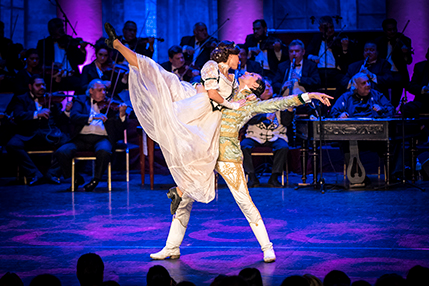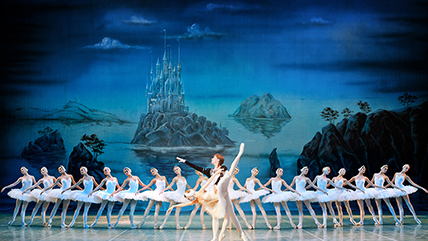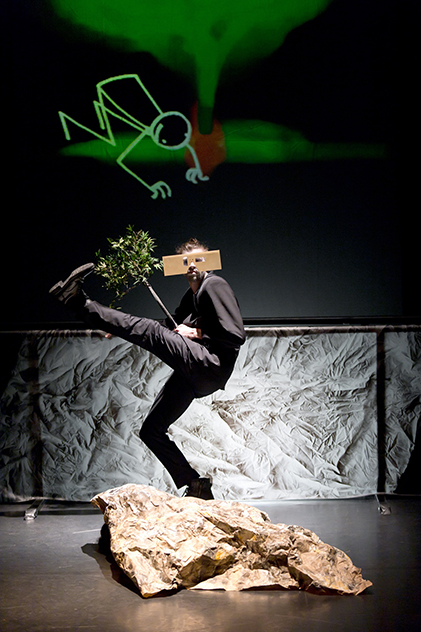
The Legend of Sissi – Once upon a Time of the Emperor
Regarded as an ambassador of Hungarian culture in music and dance on one stage, the dance drama is rendered by the ExperiDance Production and the Budapest Gypsy Symphony Orchestra, depicting a glorious queen, a daring earl and a beautiful gypsy girl in a love triangle. Queen Elizabeth, known as Sissi, married Emperor Franz Joseph I in 1854, and became the First Lady of the Empire of Austria at the age of 16. The beautiful, sensitive and untamed woman was fleeing the suffocating constraints inherent in her role throughout her life. She found happiness and love in Hungary, where the nobility adored her, especially Count Gyula Andrássy, considered to be the most handsome man in the country. However, their affection could never be fulfilled.
The legendary love inspired the co-production of the ExperiDance Production and the Budapest Gypsy Symphony Orchestra. The heroes of the dance drama are a glorious queen, a daring earl and a beautiful gypsy girl. The amorous encounters and separations take place at a splendid ball. The dance conveys the tense and agonising moments of never fulfilled passion.
The soloists of the Budapest Gypsy Symphony Orchestra provide lively dance music for the production. The music features masterpiece melodies including Hungarian Rhapsody by Franz Liszt, The Blue Danube by Johann Strauss and Hungarian Dances by Johannes Brahms.
The ExperiDance Production was founded by Sándor Román and Tibor Vona in 2000 with former as the artistic director and the latter the producer. The company has over 50 artists and 20 works. It ever toured in 12 countries, presenting more than 2000 performances, and attracting two million audiences.
The Hungarian national heritage has two jewels, the Hungarian folk dance and the Hungarian gypsy music. In these two areas the company achieved reform, innovation and integration. As state-level art group, the company made remarkable contributions to the upholding and development of Hungarian national culture, especially to dance. It integrated the vigorous folk dance with the popular modern dance, creating their unique style and therefore won the honor of the ambassador of Hungarian dance culture. Their major productions include One Thousand and One Years (2000), Musketeers (2001), Bartók’s Dance Piece (2002), Revenge (2003), Steel - the Legend of Metal (2004), Gypsies of Nagyida (2006), Essence - Celebration of the Rhythm (2008), The Source - Icecold and Burning Hot (2011), The Count of Monte Cristo (2012), The Legend of Sissi - Once Upon a Time of the Emperor (2013), A Night in Venice (2014), I, Leonardo (2015), Pearl-Haired Girl (2016), and etc.
The company was awarded the EuroPAS Hungarian Dance Award in 2001, the Gundel Arts Award in 2010, the Cradle Award of the National Association of Large Families in 2014, and the European Business Awards in 2015. The Budapest Gypsy Symphony Orchestra (Hundred Gypsy Violins) was founded in 1985. It is the largest gypsy orchestra in the world and is considered as the invisible museum of Hungarian spirit.
The orchestra now boasts 138 members, including soloists of violin, cello, bass, cymbalo and clarinet. Beside classical pieces of arts – including those of Liszt, Bartók, Kodály, Hubay, Erkel, Brahms, Tchaikovsky, Sarasate, Strauss – they also play traditional Hungarian Gypsy music, Hungarian melodies and folk songs alike.
The Orchestra has toured around the world, performing at Gewandhaus, Wiener Musikverein, Victoria Hall of Geneva, and Theatre des Champs-Elysees,rendered the warmest welcome by audiences and widespread praise by media.
April 27-29, 2017 Grand Theatre, Beijing Tianqiao Performing Arts Center

Swan Lake, The National Academic Bolshoi Opera and Ballet Theater of the Republic of Belarus
The National Academic Bolshoi Opera and Ballet Theater of the Republic of Belarus is the main musical and theatrical scene and one of the symbols of the country's culture.
The theater collects the best artistic people of the country. Ballet troupe consists of 120 artists; many of them have honorary titles and awards at prestigious international competitions.
The establishment of the national repertoire is always combined with the creative development of classical ballet. The directors and actors of the theater carefully recreate the performances, which were created by the classics of 18-19th-century Western European and Russian choreography. The performances of classical ballet take an important place in the repertoire: "Swan Lake" and "Sleeping Beauty" by P.
Tchaikovsky, "La Bayadere" and "Don Quixote" by L. Minkus, "Giselle, or Vilis" by A. Adana, "Esmeralda" by C. Puni, "La Sylphide" by H. Levenskholda and others.
Performances created by a new generation of Belarusian choreographers are marked by unique conception, novelty of the creative pursuits, stylistic diversity.
Over the past 15 years, the ballet troupe of The National Academic Bolshoi Opera and Ballet Theater of the Republic of Belarus has visited more than 30 countries around the world, moreover, at some countries gave performance more than once.
Pyotr Tchaikovsky
Swan Lake
ballet in three acts
Libretto: Vladimir Begichev, Vasily Geltser
Version by the People's Artist of Belarus Yury Troyan and Aleksandra Tikhomirova
The performance contains choreogrpahy by Lev Ivanov, Marius Petipa, Alexander Gorsky, Yury Troyan, Aleksandra Tikhomirova (the 3rd act)
Designer: laureate of the State Prize of the Republic of Belarus Ernst Heidebrecht
Costume Designer – Eleonora Grigoruk
Conductors: Honoured Artist of Ukraine Viktor Ploskina, Honoured Art Worker of the Republic of Belarus Nikolai Koliadko, Andrey Galanov, Oleg Lesun
Running time: 2 hours 45 minutes
Performed with two intervals
The first act
A young prince Siegfried celebrates his majority. The celebration is interrupted by his mother, the Sovereign Princess. She is displeased with the life of joy that her son lives and wants him to marry. A feeling of sadness stole over the prince: the time of youth and entertainment is over. After The Sovereign Princess leaves, the celebration continues. It’s getting dark. Siegfried is sad: he doesn’t want to part with the life of joy among his friends, but at the same time he dreams of pure and unearthly love.Obeying his vague hunches he leaves his company and goes out hunting. The second sceneThe prince comes to a bank of a fantastic lake. The swan maidens appear enchanted by the sorcerer Von Rothbart. Only at night they get their human shape back. Siegfried meets the Swan Queen, beautiful Odette. Her beauty fascinates the prince and he swears eternal love to her. Only a sincere and inevitably feeling can save the maidens from the sorcerer. Siegfried is secured in his affection – he’ll save Odette from the power of the enchanter. The dawn is at hand. The maidens have to turn into swans again.
The second act Noble men came to the ball at the castle of the Sovereign Princess with their daughters, among which the prince should choose his bride. In the midst of the ball an unknown knight with his beautiful daughter appears. It’s Von Rothbart with Odile that is amazingly similar to the Swan Queen. Siegfried is sure that it’s Odette. Von Rothbart orders Odile to draw love expression out of the prince. Siegfried announces his decision to marry the daughter of an unknown knight to his mother. The evil genius triumphs, the oath is broken, now Odette and the maidens will die. Odile and Rothbart disappear, and Siegfried understands that he broke the oath made to Odette. In despair he gravitates toward the lake.
The third act The bank of the lake. An obscure and anxious night. Waiting for Odette the maidens reel. Odette appears with tragic news: the prince broke the oath, the hope of rescue is lost. Von Rothbart appears. He makes a spell to perish Odette. But Siegfried comes to the rescue. He implores forgiveness, because there, in the castle he saw her and the words of love were spoken at her. And if nothing can save them, he’ll die together with her. Natural power, enchanted by Von Rothbart turns against the lovers. Good and evil match against each other for the last time. But nothing can do Siegfried and Odette apart: the spell of Von Rothbart dash against the power of love. The dawn is at hand. The unspelled swan maidens, Odette and Siegfried greet the rays of the rising sun.
May 30-31, 2017 Opera House, National Center for the Performing Arts

Carolyn Carlson “Seeds”
In 2006, Carolyn Carlson created her solo Double Vision in close partnership with the artist Yacine Aït Kaci. In this solo, the space was echoing the body, the stage was an immense projection screen, the gigantic costumes were the skin of an image in perpetual movement.
Today, Carolyn and Yacine (YAK) initiate a new creation, this time aimed at young audiences. Carolyn choreographs; Yacine animates ELYX, a small drawned figure placed in a real world in order to open our eyes on what is surrounding us, and transform reality with the only power of our imagination.
Seeds is a joyful ode to Mother Earth, as much as a call to the future generations for a greater awareness of environmental urgency and the danger of daily extinctions of many living species.
The performers imagine the world of tomorrow: a couple of Japanese dancers who are becoming aware of the danger; a third dancer, mirror image of Elyx on stage, questioning the audience both young and old alike, all coming from a seed; and Elyx, who in a way is the fourth dancer, as a whistleblower angel.
The title, Seeds, deals with themes such as birth, or rebirth, an ode to hope: seeds will be spread, virtually or physically, for the blooming of new ideas and desires, to celebrate life.
Carolyn Carlson Company “The Carolyn Carlson Company is a hive of activity, an area of creativity and freedom in which intertwine gesture and poetic thought...”
January 2014: after nine years as director of the CCN de Roubaix Nord-Pas de Calais, Carolyn Carlson returns to Paris and funds her company, the Carolyn Carlson Company (CCCy).
With a unique repertory and accompanied by dancers true to her poetical gesture, Carolyn pursues her creative process: each year, the Carolyn Carlson Company carries out at least two large scale projects, a creation and the transmission of repertoire pieces to the most prestigious international ballets, while continuing touring the choreographers’ creations worldwide.
Now in residence in the Théâtre National de Chaillot, the Company is at the very center of the Parisian choreographic scene. Carolyn Carlson proposes improvisational sessions concerning her unique technique from the heritage of Alwin Nikolaïs, including the transmission of her repertoire, and artistic encounters to share with the public.
Carolyn Carlson
California-born Carolyn Carlson defines herself first and foremost as a nomad. From San Francisco Bay to the University of Utah, from the Alwin Nikolaïs company in New York to Anne Béranger’s in France, from Paris Opera Ballet to Teatrodanza La Fenice in Venice, from the Théâtre de la Ville de Paris to Helsinki, from Ballet Cullberg to La Cartoucherie in Paris, from the Venice Biennale to Roubaix, Carlson is a tireless traveller, always seeking to develop and share her poetic universe.
She arrived in France in 1971 the beneficiary of Alwin Nikolaïs’ ideas about movement, composition and teaching. The following year, with Rituel pour un rêve mort, she wrote a poetic manifesto that defined an approach to her work that she has adhered to ever since: dance that is strongly oriented towards philosophy and spirituality. Carlson prefers the term ‘visual poetry’ to ‘choreography’ to describe her work.
For four decades, Carlson has had significant influence and success in many European countries. She played a key role in the birth of French and Italian contemporary dance through the GRTOP (theatre research group) at Paris Opera Ballet and Teatrodanza at La Fenice.
She has created over 100 pieces, a large number of which are landmarks in the history of dance, including Density 21.5, The Year of the Horse, Blue Lady, Steppe, Maa, Signes, Writings on Water and Inanna. In 2006, her work was rewarded with the first ever Golden Lion given to a choreographer by the Venice Biennale.
Founder of the Atelier de Paris-Carolyn Carlson at the Cartoucherie in 1999, she is now, since 2014 and for a two-year period, associated artist to Théâtre National de Chaillot, where the Carolyn Carlson Company has settled.May 30, 2017 Studio Theater, Beijing Tianqiao Performing Arts Center



